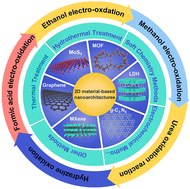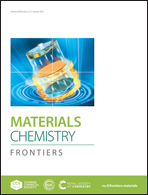Recent progress on 2D material-based nanoarchitectures for small molecule electro-oxidation
Abstract
Amidst the concurrent challenges posed by the energy crisis and environmental pollution, the direct liquid fuel cell (DLFC) emerges as a pivotal clean and renewable energy source, significantly advancing sustainable energy production and consumption systems. In this regard, the commercialization of the direct liquid fuel cell hinges on the development and fabrication of cost-effective electrocatalysts with high activity and robust durability. Two-dimensional (2D) materials have made significant advancements in recent years as electrocatalyst candidates, offering a large surface area, distinctive 2D layered structure, numerous exposed active sites, and robust chemical stability. In this review, we comprehensively summarize the recent advancements in the controlled fabrication of nanoarchitectures based on 2D materials using various synthetic methods. Furthermore, we examine their application and the relationship between structure and electrochemical performance in the electro-oxidation of small molecules used in DLFC, including methanol oxidation reaction, alcohol oxidation reaction, formic acid oxidation reaction, hydrazine oxidation reaction, and urea oxidation reaction. Finally, we present future perspectives that address the forthcoming challenges and opportunities within this emerging domain.

- This article is part of the themed collections: 2023 Materials Chemistry Frontiers Review-type Articles and 2023 Materials Chemistry Frontiers HOT articles


 Please wait while we load your content...
Please wait while we load your content...